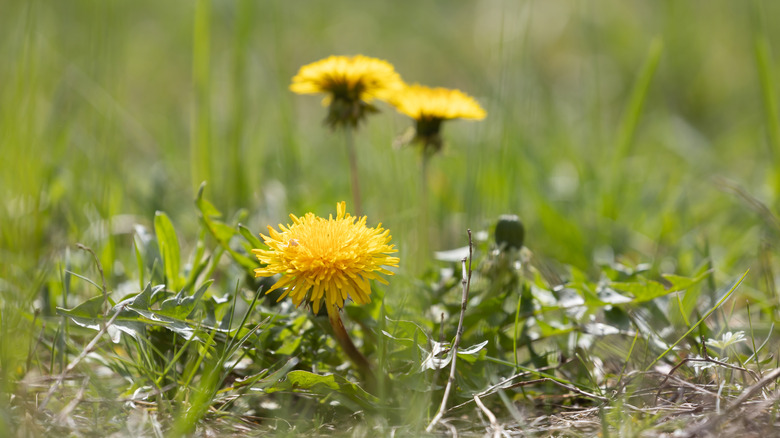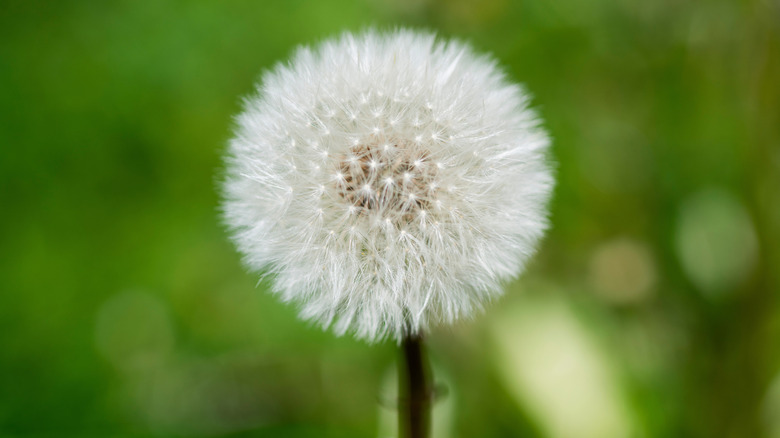What It Really Means When Dandelions Turn White
You might know that dandelions (Taraxacum officinale) often decorate your landscape with a cheery, yellow color. But what about when you see white dandelions? Don't worry. Your lawn didn't develop a crop of entirely new plants, nor are they sick and dying. Dandelions are short-lived perennials, and as they turn white, it means that the plant is at the end of the flowering stage in its life cycle. This is a period marked by their seed release. Soon, you might start to see new dandelions taking over your yard or garden if any dispersed seeds germinate.
Dandelions undergo several stages in their life cycle, starting first as a seed. They reproduce asexually by seed in a process known as apomixis, which creates clones of the parent plant. They develop a long taproot that may grow 6 to 18 inches deep or more into the soil. Though this strong taproot makes the dandelion hard to remove from your lawn, it may also benefit surrounding plants as it draws in calcium and brings it closer to the surface. This is why killing dandelions in your yard can be a bad choice for your lawn.
As the seed germinates, a basal rosette of leaves forms near the ground and begins producing buds. These buds bloom in spring, typically in March through the fall. The flowering features turn into the serrated yellow flowers that inspire their name, French for "lion's tooth." At this stage, pollinators such as bees may be drawn to the flowers' nectar. Finally, the yellow florals turn to white, becoming those white, fluffy seed heads, ready to drift into the wind.
What the white stage means in dandelions
When the dandelions in your lawn turn from yellow to white, it marks when they're in the final flowering stage of their life. The yellow flowers have now dried out and fallen off, leaving behind a magnificent round seed head. Each seed is attached to a pappus, a so-called "parachute" of soft white hairs that drift easily in the wind as it blows. Incredibly, researchers have found that the pappus forms with a ring-shaped vortex, creating an air bubble to help the seed stay aloft and travel far distances.
The seeds flow through the air, boosted by the air's current in an updraft, landing on your lawn and beyond. Their flight is incredible, and some seeds may travel as far as 500 miles away from their original spot. That's why it can be hard to stop dandelions from taking over your yard or garden. Each plant can produce an average of 15,000 seeds, though not every seed takes root. The ones that do begin forming the same strong taproot as their "parent." Then the cycle begins again, with the rosette of leaves, yellow flowers, and finally, the white seed head. This most crucial stage helps the plants reproduce, as it ensures their survival of future generations.

